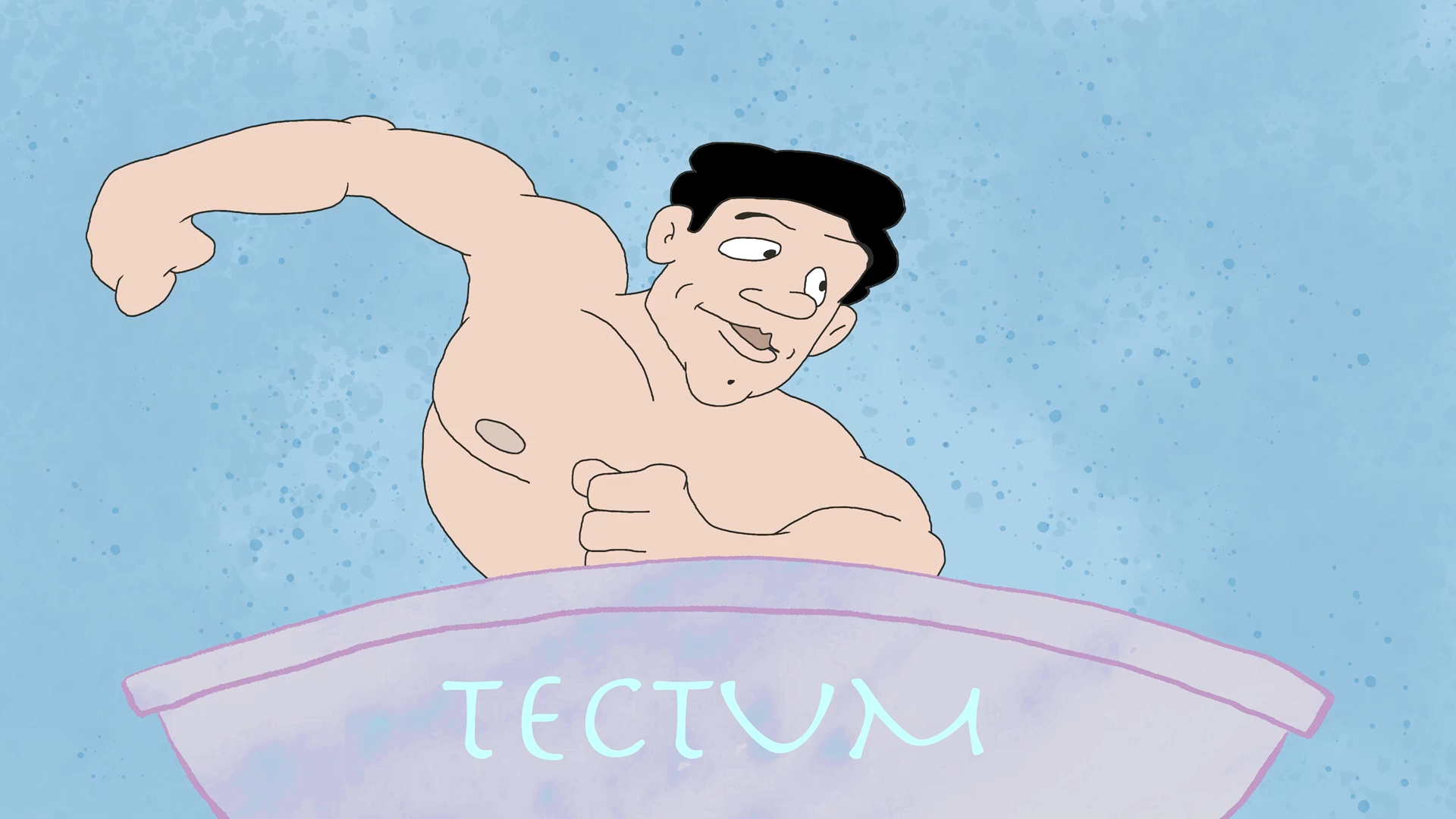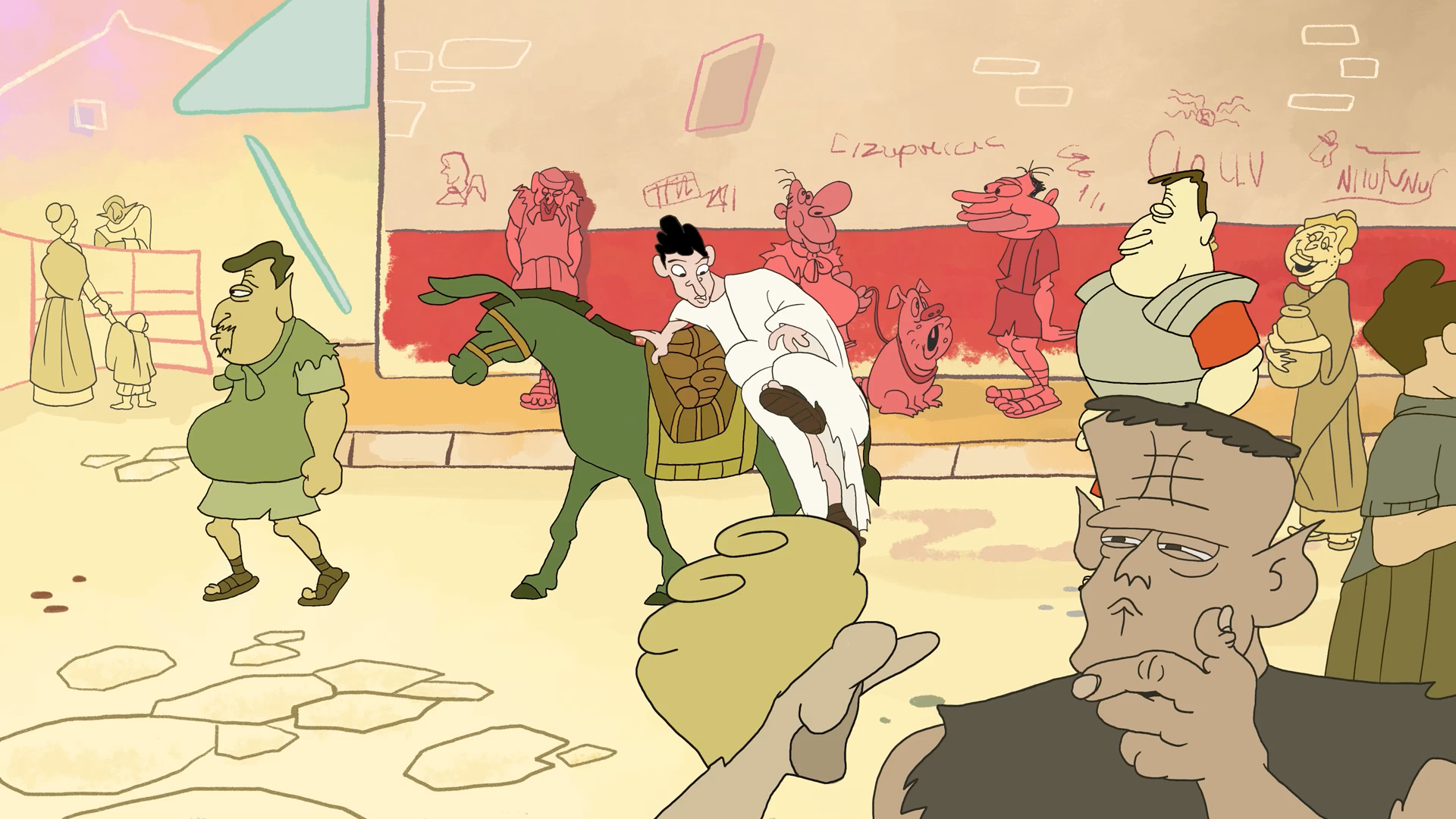The film A Day in the Life of a Roman Client has just been released on YouTube, we reproduce below an interview with the animator. Aylish Wood, Professor of Animation and Film at the University of Kent interviewed Malachi James, who made film for the University of Kent. The interview explores some of the issues of the film seen from Malachi’s perspective and describes how he created the characters and his own view of the Roman world.
Malachi James, storyboard and animator for A Day in the Life of a Roman Client, interviewed by Aylish Wood
I met Malachi James in coffee shop to talk about his work on A Day in the Life of a Roman Client and animation more generally. Malachi lives in North London and is currently in his second year of a BA in Animation at the London College of Communication. We talked about what he loves about animation, his animation technique, and experience of animating A Day in the Life of a Roman Client.
We started by talking about what Malachi loves most animation. For Malachi, animation offers an escape, and he likes the humour: ‘I’m a very humorous person, I appreciate exaggeration.’ He went on to say that: when he was younger, he was always drawing, and on discovering animation, he ‘liked that you could draw and your drawing would move, that was really appealing to me, it made me see the possibilities of art and creation. I love characters – that’s the main thing for me.’
Malachi’s developing animation style has been particularly influenced by 1990s animation, such as Ren and Stimpy and other animations by John Kricfalusi. These draw on American cartoons from the 1940s and 50s, including those by Tex Avery and Chuck Jones. Malachi Avery’s humour because of its edge. Avery took more risks, and is generally more rude and nasty than animators could be when working at the Disney Studio.
Malachi’s own technique for drawing characters is not realistic, but based on a more absurd, exaggerated style. He starts a project by drawing on paper, then storyboarding before drawing on the computer using packages such as TVPaint and Photoshop. Rather than working with the digital puppetry of 3D animation software, he values working in 2D frame by frame: ‘you can really feel the life in a character when drawn by hand, as opposed to digital puppetry.’
Working in frame-by-frame animation lets Malachi emphasize gesture and posing, and create interesting poses. As he says: ‘The magic is in the in-betweens. The magic is in the frames you can’t see because they go by in an instant, but you can feel them.’ For A Day in the Life of a Roman Client Malachi used Photoshop. Drawing each frame involved figuring out all the spacing and timing, because there is no interpellation. He kept the animation dynamic, by making sure the in-between didn’t go exactly in-between every frame – allowing him to alter the rhythm and keep it interesting. Trying things out is important for Malachi: ‘I like to try out different styles and set myself limits to give myself a wide palette.’
We moved on to talking about how Malachi approached his commission to create A Day in the Life of a Roman Client and working with Professor Ray Laurence at the University of Kent. He researched the background by undertaking visual research and talked with Ray about Roman culture. For visual research he looked at drawings, painting, and photographs of Roman artefacts. Talking to Ray, gave him a feel for what it would be like to live as a Roman client. By drawing numerous free sketches, Malachi tested out imagery to find what was humorous and fun. Running through the script and storyboard with Ray ensured his ideas were in keeping with the time period. When it came to food, no tomatoes or bananas, but figs and dates instead.
In addition to researching Roman imagery and culture, Malachi also sought out suitable stylistic influences, and found the subtle simplicity and minimal style of the layout and background art of Ren and Stimpy a good place to start – in creating his own design. He is ‘concerned with the design, because a good design is central to the animation.’
Throughout Malachi also taught himself design theories, and got deeper into character design. To develop the characters appearing in A Day in the Life of a Roman Client, Malachi looked at lot of sculpture from the period. Deciding to make fun of the muscular masculinity he also drew on cinema. By combining a Kirk Douglas influenced stylization with archetypes, he found the characters he wanted, adding variation by using different skin tones. Malachi comments: ‘symmetry and detail are the enemy are the enemy of animation,’ and that the beauty of hand drawn animation is combining curves and straights to add dynamic feel. He also made good use of squash and stretch because it ‘gives more energy to the animation.’
We finished by talking about what Malachi enjoyed most about animating A Day in the Life of a Roman Client. He says: ‘learning about a culture, about which I didn’t know a lot previously, and also learning techniques in my own field. Learning theories, learning composition, learning animation, learning a lot. That’s the main thing. If I could bracket everything into one word, I would say learning.’
More of Malachi James’ art can be seen at http://www.malachijames.com/
Aylish Wood, School of Arts, University of Kent: interview 8 March 2017.




